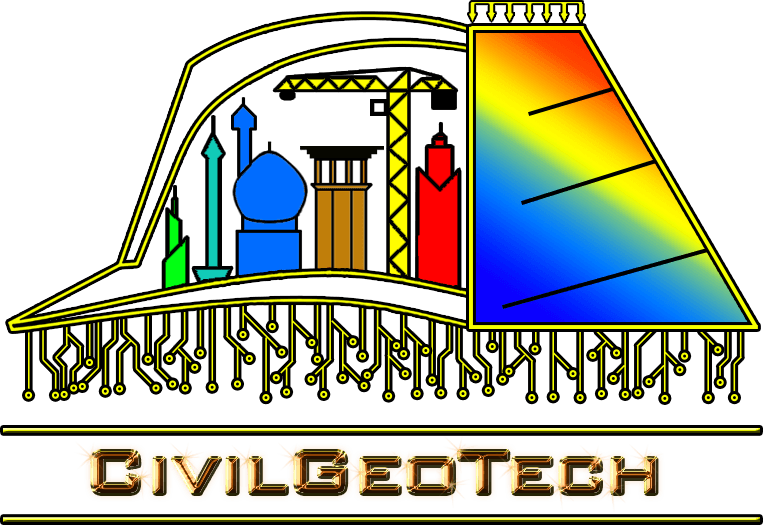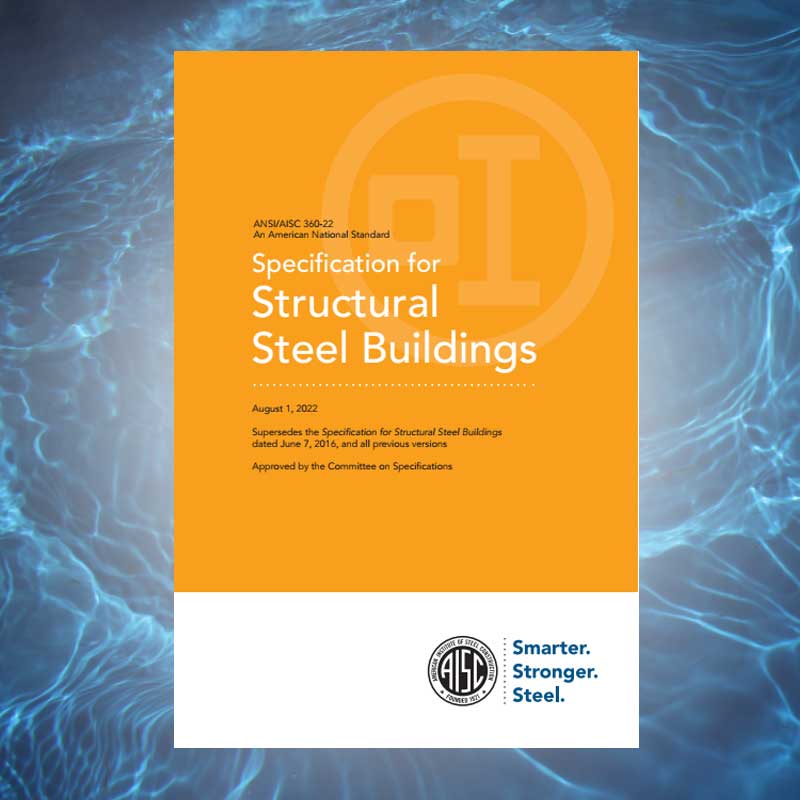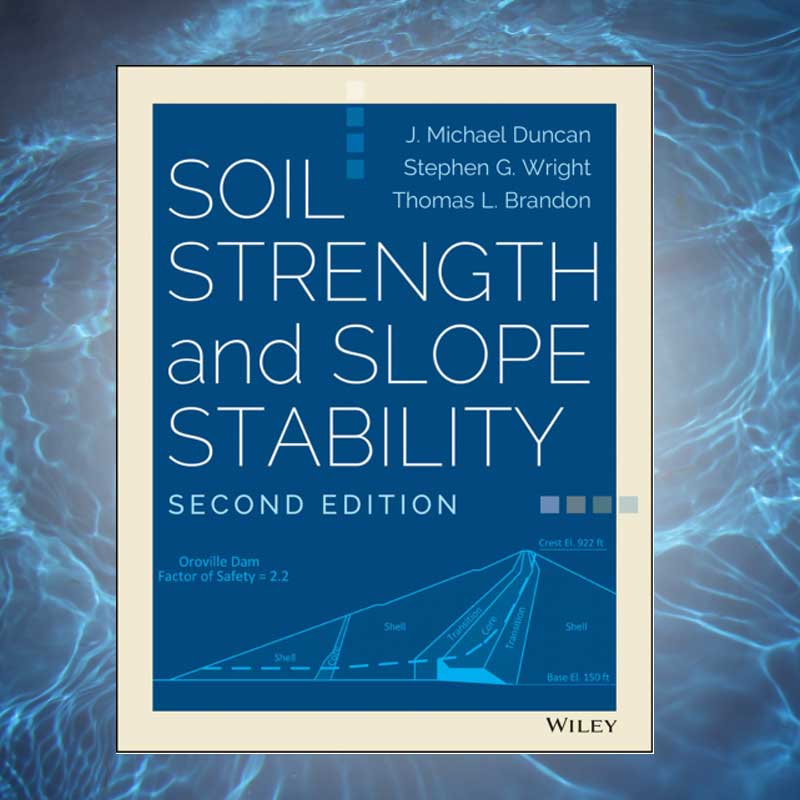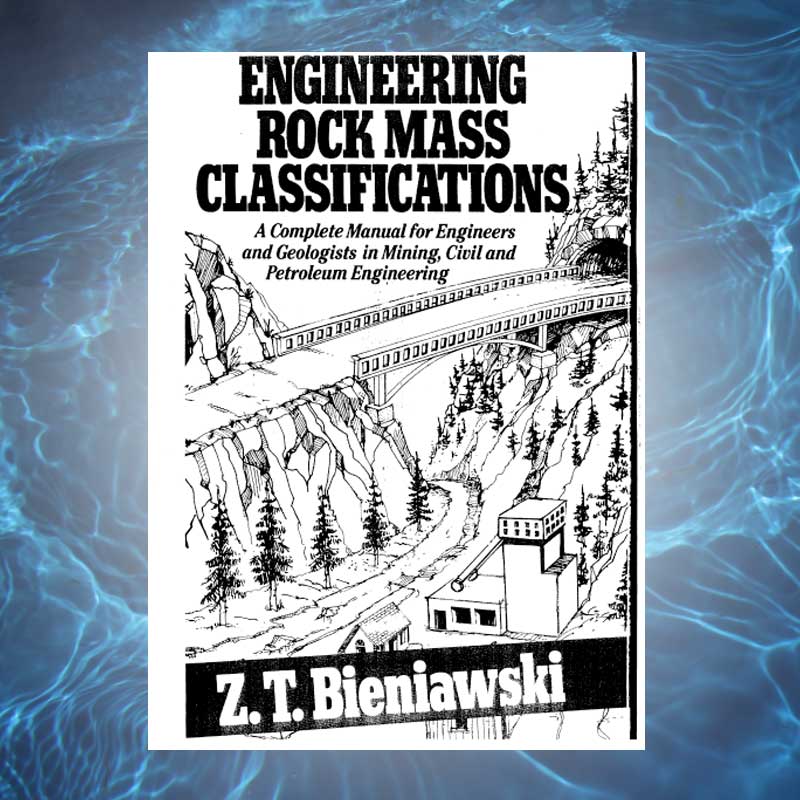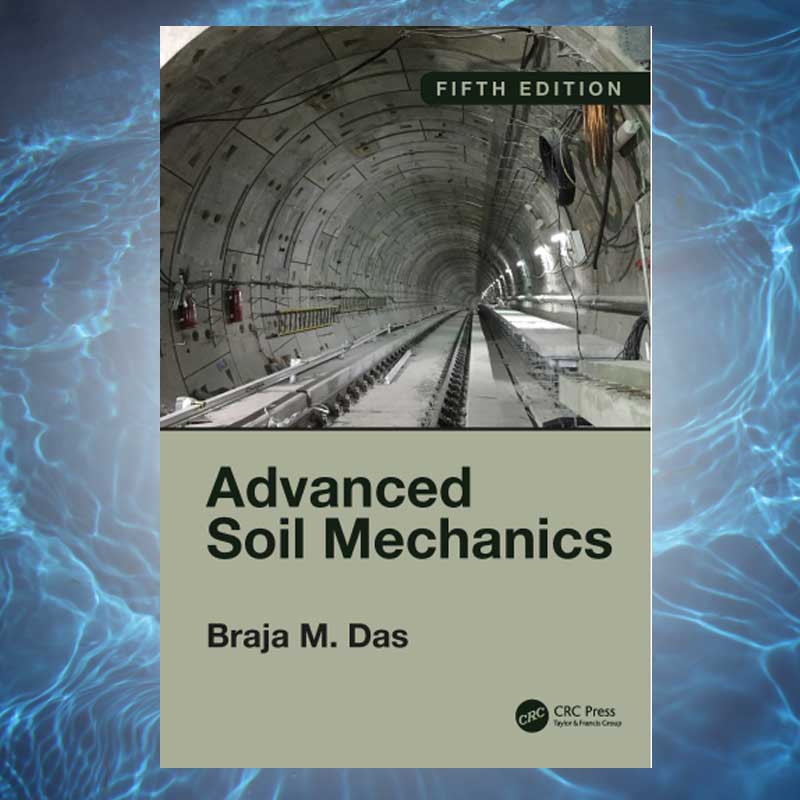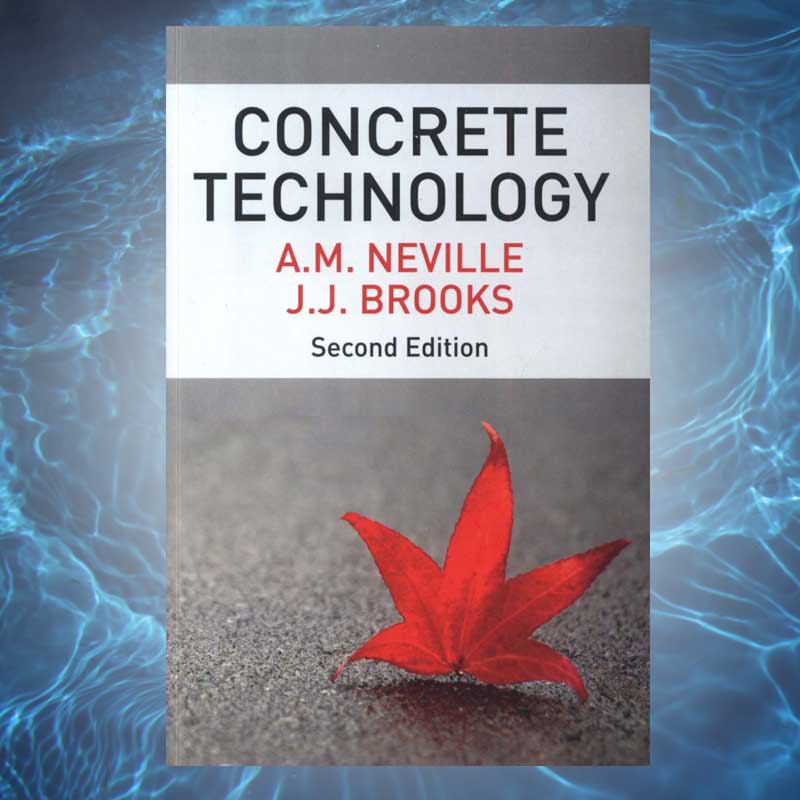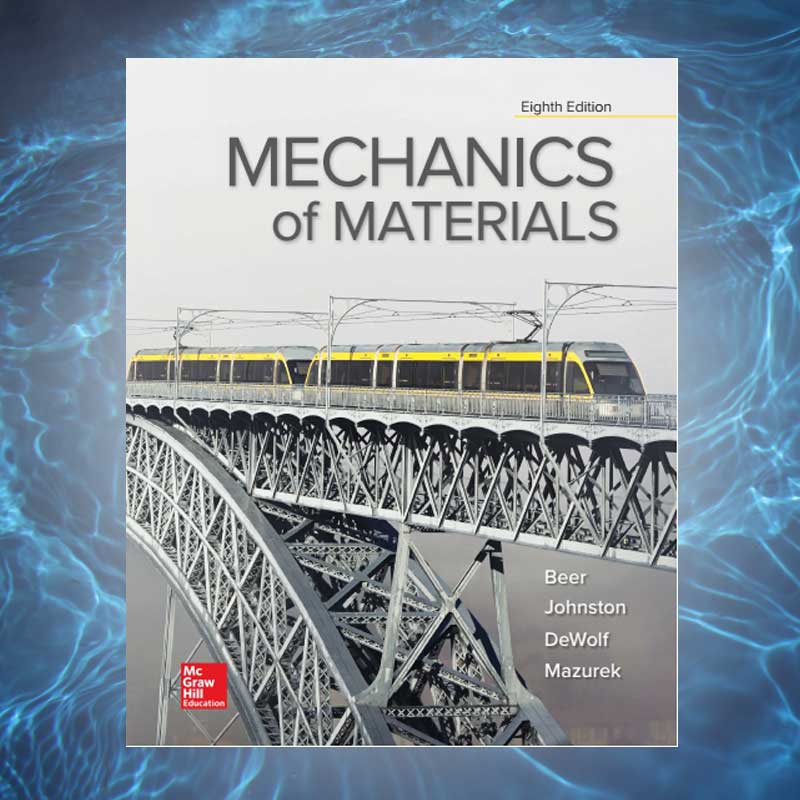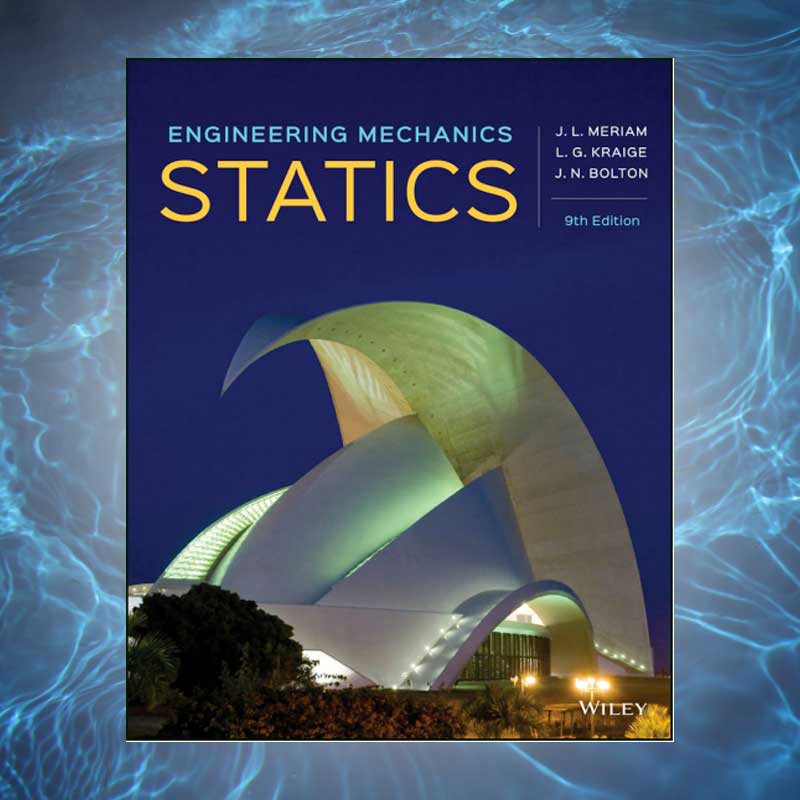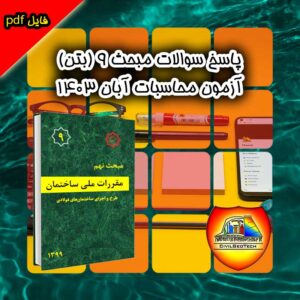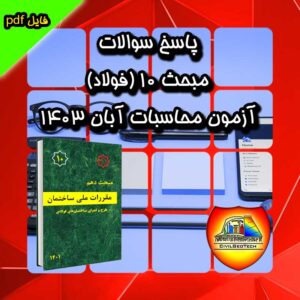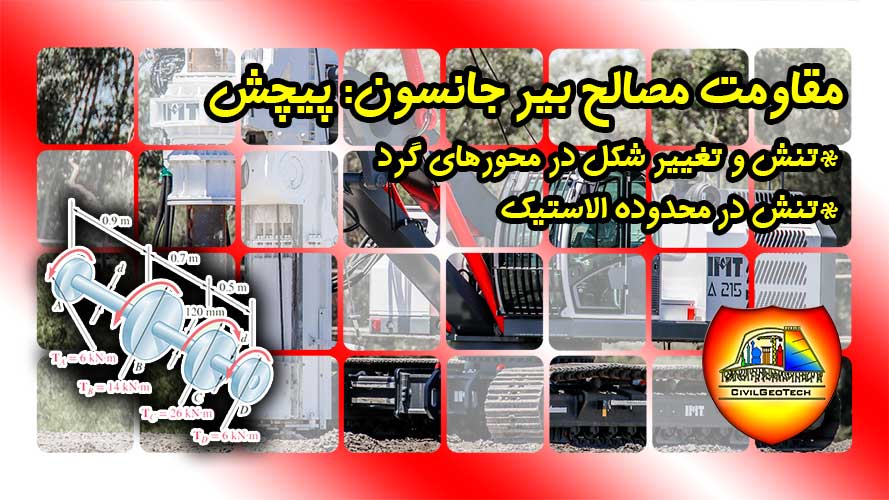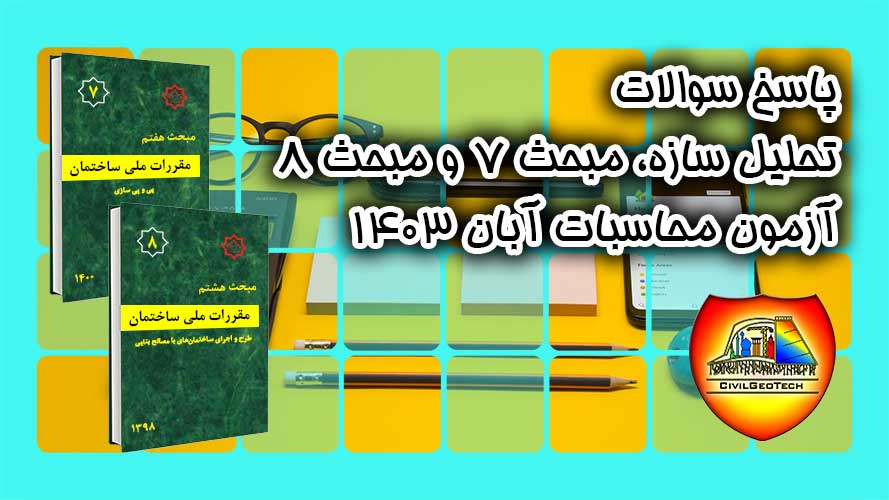مقدمه:
(This Preface is not part of ANSI/AISC 360-22, Specification for Structural Steel Buildings, but is included for informational purposes only.)
This Specification is based upon past successful usage, advances in the state of knowledge, and changes in design practice. The 2022 American Institute of Steel Construction’s Specification for Structural Steel Buildings provides an integrated treatment of allowable strength design (ASD) and load and resistance factor design (LRFD), and replaces earlier Specifications. As indicated in Chapter B of the Specification, designs can be made according to either ASD or LRFD provisions.
This ANSI-approved Specification has been developed as a consensus document using ANSI-accredited procedures to provide a uniform practice in the design of steel-framed buildings and other structures. The intention is to provide design criteria for routine use and not to provide specific criteria for infrequently encountered problems that occur in the full range of structural design.
This Specification is the result of the consensus deliberations of a committee of structural engineers with wide experience and high professional standing, representing a wide geographical distribution throughout the United States. The committee includes approximately equal numbers of engineers in private practice and code agencies, engineers involved in research and teaching, and engineers employed by steel fabricating and producing companies. The contributions and assistance of more than 50 additional professional volunteers working in task committees are also hereby acknowledged.
The Symbols, Glossary, Abbreviations, and Appendices to this Specification are an integral part of the Specification. A nonmandatory Commentary has been prepared to provide background for the Specification provisions and the user is encouraged to consult it. Additionally, nonmandatory User Notes are interspersed throughout the Specification to provide concise and practical guidance in the application of the provisions.
A number of significant technical modifications have also been made since the 2016 edition of the Specification, including the following:
•A new table is incorporated into Section A3 that lists allowable grades and strengths and other specific limitations of referenced materials.
•Section J3 adopts ASTM F3148 bolts that provide a strength of 144 ksi. A new combined installation method is incorporated into Chapter J applicable to these bolts by reference to the RCSC Specification.
•Section A4 provides a detailed list related to what information must be provided on structural design documents. These criteria have been moved from the Code of Standard Practice for Structural Steel Buildings.
•A new Section A5, Approvals, is added to specifically address the review and approval of approval documents.
•A new Section B8, Dimensional Tolerances, is added to clarify that the provisions of the Specification are based on specific tolerances provided in the Code of Standard Practice and referenced ASTM standards.
•Provisions are added in Section E4 for doubly symmetric I-shaped compression members to address lateral bracing that is offset from the shear center.
•For flexural strength of members with holes in the tension flange, it is clarified that the Section F13.1 provisions apply only to bolt holes.
•Provisions are added to Chapter G to permit tension field action in end panels.
•Provisions are added to Chapter H for HSS subjected to combined forces, to include biaxial bending and shear.
•Provisions are added to Chapter I for longitudinal and transverse reinforcing steel requirements for filled composite columns and for both encased composite and filled composite beams.
•Chapter I now includes additional stiffness and strength provisions for concrete filled composite plate shear walls consisting of two steel plates connected by tie bars.
•Provisions for the design of rectangular filled composite members constructed from materials with strengths above the limits noted in Chapter I are added in a new Appendix 2.
•Section J2 provides revised requirements to qualify partial-joint-penetration groove welds with effective throats larger than those prescribed in AWS D1.1/D1.1M.
•Requirements regarding the use of low-hydrogen electrodes as they relate to minimum size fillet welds are revised in Table J2.4.
•The directional strength increase for transversely loaded fillet welds is rewritten and prohibited for use in the ends of rectangular HSS.
•An alternative bolt tensile strength based on the net tensile area of bolts is added.
•Added limit states for rectangular HSS moment connections in Chapter K.
•Section N4 now addresses coating inspection personnel requirements.
•A new Section N8, Minimum Requirements for Shop or Field Applied Coatings, is added.
•Appendix 2, Design for Ponding, is removed and replaced with updated guidance on this topic in Section B3.10.
•Appendix 3 clarifies hole forming provisions for elements subjected to fatigue.
•Appendix 4 incorporates temperature-dependent stress-strain equations from the Eurocode to provide material properties for steel at elevated temperatures.
•Prescriptive steel fire-protection design equations and related information based on standard ASTM E119 fire tests are incorporated into Appendix 4.
•Appendix 4, Section 4.4d, Design by Simple Methods of Analysis, includes provisions for compressive strength in filled composite columns and for compression in filled composite plate shear walls.
•Provisions for calculating rivet strength are added in Appendix 5.
این پیشگفتار بخشی از ANSI/AISC 360-22، مشخصات ساختمانهای فولادی سازه نیست، اما فقط برای اهداف اطلاعاتی گنجانده شده است.
این مشخصات بر اساس استفاده موفق گذشته، پیشرفت در وضعیت دانش و تغییرات در عمل طراحی است. مشخصات انستیتوی ساخت و ساز فولادی آمریکا در سال 2022 برای ساختمانهای فولادی سازه، درمان یکپارچهای از طراحی مقاومت مجاز (ASD) و طراحی ضریب بار و مقاومت (LRFD) ارائه میکند و جایگزین مشخصات قبلی میشود. همانطور که در فصل B مشخصات مشخص شده است، طراحی ها را می توان بر اساس مقررات ASD یا LRFD انجام داد.
این مشخصات تایید شده توسط ANSI به عنوان یک سند اجماع با استفاده از رویه های معتبر ANSI برای ارائه یک روش یکسان در طراحی ساختمان های اسکلت فلزی و سایر سازه ها ایجاد شده است. هدف، ارائه معیارهای طراحی برای استفاده معمول است و نه ارائه معیارهای خاص برای مشکلاتی که به ندرت با آنها مواجه می شوند که در طیف کامل طراحی سازه رخ می دهد.
این مشخصات نتیجه مذاکرات توافقی کمیته ای از مهندسان سازه با تجربه گسترده و جایگاه حرفه ای بالا است که توزیع جغرافیایی گسترده ای را در سراسر ایالات متحده نشان می دهد. این کمیته تقریباً شامل تعداد مساوی از مهندسان در آژانس های خصوصی و کد، مهندسان درگیر در تحقیق و تدریس و مهندسان شاغل در شرکت های تولید و تولید فولاد است. مشارکت و کمک بیش از 50 داوطلب حرفه ای دیگر که در کمیته های وظیفه کار می کنند نیز بدین وسیله قدردانی می شود.
نمادها، واژه نامه، اختصارات و ضمائم این مشخصات بخشی جدایی ناپذیر از مشخصات هستند. یک تفسیر غیر اجباری برای ارائه پیش زمینه برای مفاد مشخصات تهیه شده است و کاربر تشویق می شود تا با آن مشورت کند. علاوه بر این، یادداشتهای کاربر غیراجباری در سراسر مشخصات پراکنده شدهاند تا راهنمایی مختصر و عملی در کاربرد مفاد ارائه کنند.
تعدادی از اصلاحات فنی قابل توجه نیز از نسخه 2016 مشخصات انجام شده است، از جمله موارد زیر:
- یک جدول جدید در بخش A3 گنجانده شده است که درجات و نقاط قوت مجاز وسایر محدودیت های خاص مواد مرجع.
- بخش J3 از پیچهای ASTM F3148 استفاده میکند که استحکام 144 ksi را فراهم میکنند. ترکیبی جدید روش نصب با مراجعه به مشخصات RCSC در فصل J گنجانده شده است.
- بخش A4 فهرست مفصلی در رابطه با اطلاعاتی که باید در اسناد طراحی سازه ارائه شود ارائه می کند. این معیارها از آیین نامه استاندارد رویه ساختمان های سازه ای فولادی خارج شده اند.
- یک بخش A5 جدید، تأییدها، اضافه شده است تا به طور خاص به بررسی و تأیید اسناد تأیید بپردازد.
- بخش B8 جدید، تحملهای بعدی، اضافه میشود تا روشن شود که مفاد مشخصات بر اساس تلورانسهای خاص ارائهشده در آییننامه عملکرد استاندارد و استانداردهای ASTM ارجاعشده است.
- مقرراتی در بخش E4 برای اعضای فشاری I شکل متقارن مضاعف اضافه شده است تا مهاربندی جانبی که از مرکز برشی منحرف شده است را بررسی کند.
- برای استحکام خمشی اعضای دارای سوراخ در فلنج کششی، مشخص شده است که مقررات بخش F13.1 فقط برای سوراخ های پیچ اعمال می شود.
- مقرراتی به فصل G اضافه شده است تا عمل میدان کششی در پانل های انتهایی مجاز باشد.
- برای HSS که در معرض نیروهای ترکیبی قرار می گیرد، به فصل H، مقرراتی اضافه شده است که شامل خمش و برش دو محوری می شود.
- مقرراتی برای الزامات فولاد تقویت کننده طولی و عرضی برای ستون های مرکب پر شده و برای تیرهای مرکب و کامپوزیت پر شده به فصل اول اضافه شده است.
- فصل اول در حال حاضر شامل مقررات سختی و مقاومت اضافی برای دیوارهای برشی ورق مرکب پر از بتنی است که از دو صفحه فولادی به هم متصل شده توسط میلههای اتصال تشکیل شده است.
- مفاد طراحی اعضای کامپوزیتی پر مستطیلی که از موادی با استحکام بالاتر از محدودیت های ذکر شده در فصل اول ساخته شده اند در پیوست 2 جدید اضافه شده است.
- بخش J2 الزامات تجدید نظر شده ای را برای واجد شرایط بودن جوش های شیاری با نفوذ جزئی با گلوگاه موثر بزرگتر از آنچه در AWS D1.1/D1.1M تجویز شده است، ارائه می کند.
- الزامات مربوط به استفاده از الکترودهای کم هیدروژن به دلیل مربوط به حداقل اندازه جوش فیله در جدول J2.4 تجدید نظر شده است.
- افزایش استحکام جهت برای جوش های فیله بارگذاری عرضی بازنویسی شده و برای استفاده در انتهای HSS مستطیلی ممنوع است.
- یک استحکام کششی جایگزین پیچ بر اساس سطح کششی خالص پیچ ها اضافه می شود.
- اضافه شدن حالت های حدی برای اتصالات ممان HSS مستطیلی در فصل K.
- بخش N4 اکنون به الزامات پرسنل بازرسی پوشش می پردازد.
- بخش N8 جدید، حداقل الزامات برای پوشش های کاربردی فروشگاهی یا زمینی، اضافه شده است.
- پیوست 2، طراحی برای حوض، حذف شده و با راهنمای به روز شده در مورد این موضوع در بخش B3.10 جایگزین شده است.
- ضمیمه 3 مقررات شکل دهی سوراخ را برای عناصری که در معرض خستگی قرار دارند، روشن می کند.
- ضمیمه 4 معادلات تنش-کرنش وابسته به دما را از کد یورو برای ارائه خواص مواد برای فولاد در دماهای بالا ترکیب می کند.
- معادلات طراحی حفاظت در برابر حریق فولادی و اطلاعات مربوط به آن بر اساس آزمایشات استاندارد آتش سوزی ASTM E119 در پیوست 4 گنجانده شده است.
- ضمیمه 4، بخش 4.4d، طراحی با روش های ساده تحلیل، شامل مقرراتی برای مقاومت فشاری در ستون های مرکب پر شده و برای فشار در دیوارهای برشی صفحه مرکب پر شده است.
- مقررات محاسبه مقاومت پرچ در پیوست 5 اضافه شده است.
فهرست عناوین:
A. GENERAL PROVISIONS
B. DESIGN REQUIREMENTS
C. DESIGN FOR STABILITY
D. DESIGN OF MEMBERS FOR TENSION
E. DESIGN OF MEMBERS FOR COMPRESSION
F. DESIGN OF MEMBERS FOR FLEXURE
G. DESIGN OF MEMBERS FOR SHEAR
H. DESIGN OF MEMBERS FOR COMBINED FORCES AND TORSION
I. DESIGN OF COMPOSITE MEMBERS
J. DESIGN OF CONNECTIONS
K. ADDITIONAL REQUIREMENTS FOR HSS AND BOX-SECTION CONNECTION
L. DESIGN FOR SERVICEABILITY
M. FABRICATION AND ERECTION
N. QUALITY CONTROL AND QUALITY ASSURANCE
APPENDIX 1. DESIGN BY ADVANCED ANALYSISAPPENDIX 2. DESIGN OF FILLED COMPOSITE MEMBERS (HIGH STRENGTH)
APPENDIX 3. FATIGUE
APPENDIX 4. STRUCTURAL DESIGN FOR FIRE CONDITIONS
APPENDIX 5. EVALUATION OF EXISTING STRUCTURES
APPENDIX 6. MEMBER STABILITY BRACING
APPENDIX 7. ALTERNATIVE METHODS OF DESIGN FOR STABILITY
APPENDIX 8. APPROXIMATE ANALYSIS
….
